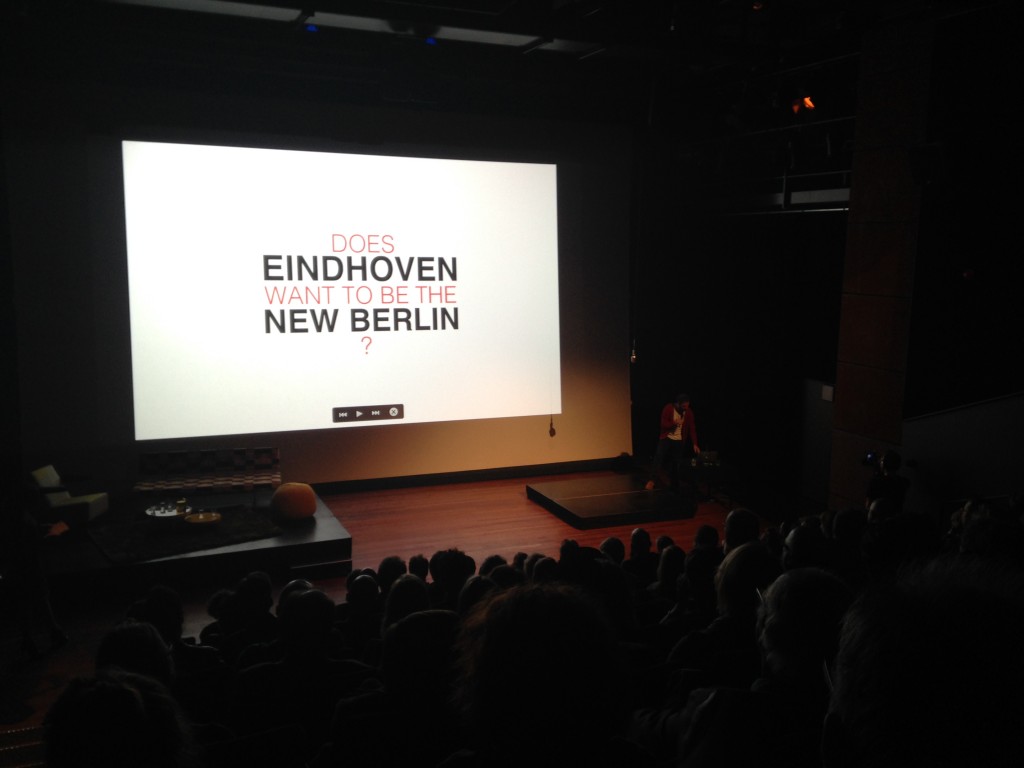[Instrumentalising] Design for Politics
Yesterday (Monday 20th of October 2014) I was invited to give a pitch in Redesign Government Now!, an event in the NatLab (Strijp S) during the Dutch Design Week 2014 in Eindhoven. By a pitch, I mean a quick (initially 10min) intervention in which I should explain how, through my project The Other Market, I was using the power of design to positively affect politics. Since I was invited to it few weeks before, given such a ‘pretentious’ title, I was already weary of how the evening might develop, specially taking into account that it would have the presence and participation of the Mayor of Eindhoven (Rob van Geizel), a political philosophy profesor (Paul Frisser) and XML architects, amongst other people. Instead of doing the traditional and expected ‘show-and-tell’ pitch, I prepared a presentation that would question the very idea of the evening. I inquired if the attempt to migrate partitioned visions of design to politics is not simply instrumentalizing it.
As expected, in the ‘good-old dutch (design) fashion’, the evening was a pretentious event. It wanted to ‘shout’ in the loudest and most notorious way that design has the agency (if not the obligation) to transform politics. The message was clear beforehand, no intention of problematizing it. What is the need to have such an event if you already know what you want to say? By the way, having a progressive mayor speaking about ‘bottom up’ civic organization followed by a conservative political scientist is not an agonistic action in itself, unless it is framed by a dynamic setup that allows the discussion to flourish and the positions to be exposed (and confronted!).
Before the event started, I was told that I had 5 minutes, instead of the initial 10. I said I could not do it in 5. They said ‘just speak about your project’. I said I would not do it without the context. I would try to make it in 7-8. For the start of the event, they played the lead of DDW14, a cinematic video that seemed a trailer for a Sci-fi apocalyptic movie where the designer is the great hero who would save the world (judge by yourselves –also, the channel where the video is hosted is called ‘The Progress Factor’). I asked myself: what am I doing here? The beginning of my pitch, the wrong presentation on the computer. They put mine instead after noticing it. It opens in the last slide, the conclusion. I take it back to the beginning, all the images are shown as ‘black’ squares. I improvise.
At the end, I was a victim of what I was trying to criticize: instrumentalizing design for politics. Using isolated parts of different people’s practices to make a preconfigured argument. Their vision on politics. I am not sure how was I interpreted at last. I am not interested in self-promotion. I am not worried on being liked. My only real concern is having my message manipulated or instrumentalized. Being misinterpreted. For the sake of transparency, I make my slides public.


I love the Sarah Kendzior quote in your presentation “Gentrifiers focus on aesthetics, not people. Because people, to them, are aesthetics.”, which I think pretty much sums up what is wrong with the StrijpS/Eindhoven (design) politics in the short experience I had with them. Kudos, Pablo, for trying this.
Thanks for your comment Thomas!
This is the article of Sarah Kendzior from which I took the quote: http://www.aljazeera.com/indepth/opinion/2014/05/peril-hipster-economics-2014527105521158885.html